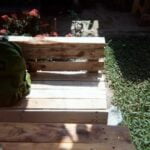Embracing contemporary ideas for small gardens involves exploring modern design trends that cater to limited outdoor spaces. As urban living becomes increasingly popular, the need for innovative and efficient garden designs has grown. In this article, we will delve into various creative solutions for maximizing small garden areas and creating visually appealing landscapes.
From minimalist design concepts to vertical gardening techniques, there are numerous ways to make the most out of a compact garden space. By embracing simplicity and functionality in contemporary garden layouts, homeowners can create stylish outdoor environments that not only look great but also serve a practical purpose. Additionally, incorporating smart gardening solutions and sustainable practices can help maintain low-maintenance yet eco-friendly small gardens.
With the rise of technology and automation in gardening, it is now easier than ever to manage and care for small garden spaces. From trendy plant selection to strategic lighting and decor pieces, homeowners have a myriad of options to enhance the ambiance of their compact gardens. Throughout this article, we will explore real-life case studies of contemporary small garden designs that inspire and showcase the endless possibilities for creating beautiful outdoor retreats in limited spaces.
Maximizing Space
Small gardens may pose a challenge in terms of space, but with the right approach, they can be transformed into functional and visually appealing outdoor retreats. When it comes to contemporary ideas for small gardens, maximizing space is essential.
One creative way to utilize every inch of a small garden is by incorporating vertical elements such as trellises, hanging planters, and wall-mounted herb gardens. These not only add greenery but also draw the eye upwards, creating the illusion of a larger space.
Another innovative way to make the most of a small garden is by combining different functions within the same area. For example, a dining table can also serve as a workspace for gardening tasks with the addition of built-in planters or storage compartments underneath.
Additionally, integrating multi-purpose furniture pieces like benches with hidden storage can help keep the garden tidy while providing extra seating for guests. By thinking outside the box and reimagining traditional garden layouts, homeowners can optimize their small outdoor spaces without sacrificing style or functionality.
Incorporating mirrors strategically in small gardens can also create an illusion of depth and spaciousness. Positioning mirrors on walls or fences can reflect light and greenery, making the area feel larger than it actually is. Furthermore, using a cohesive color palette and keeping pathways clear can contribute to a sense of continuity and openness in compact garden designs. By implementing these creative solutions for maximizing space, individuals can enjoy their own little oasis in even the smallest of outdoor areas.
Minimalist Design
When implementing minimalist design principles in a small garden, it is essential to focus on clean lines, uncluttered surfaces, and a limited color palette. Choose plants with simple shapes and foliage to maintain a sense of harmony and balance within the space. Incorporating functional elements such as seating areas, pathways, and water features should be done thoughtfully to enhance the overall look while serving a practical purpose.
In addition to plant selection and layout, hardscaping materials play a crucial role in achieving a minimalist garden design. Opt for sleek materials like concrete, wood, or metal for pathways, walls, and outdoor furniture. By keeping the materials consistent throughout the space, you can create a cohesive and modern look. Embracing simplicity and functionality in contemporary garden layouts not only beautifies small outdoor spaces but also fosters a sense of calm retreat amidst urban environments.
| Minimalist Garden Design | Key Elements |
|---|---|
| Clean Lines | Opt for simple shapes in plants and decor items |
| Limited Color Palette | Choose a few harmonious colors to maintain balance |
| Functional Elements | Incorporate seating areas and pathways strategically |
Vertical Gardening
When it comes to designing small gardens, making the most of vertical space can be a game-changer. Vertical gardening is a contemporary approach that not only maximizes space but also adds visual interest to the garden. By utilizing walls, fences, trellises, and other structures, you can create a lush green oasis even in the smallest of outdoor areas.
One popular technique for vertical gardening is the use of hanging planters or wall-mounted pots. These allow you to grow a variety of plants without taking up precious ground space. Additionally, vertical gardens can be created using living walls or green screens, which provide insulation, reduce noise pollution, and improve air quality. Incorporating these elements into your small garden design can transform a plain wall into a vibrant living canvas.
In addition to traditional plants, vertical gardening opens up opportunities for growing herbs, strawberries, and even vegetables in limited space. This not only enhances the aesthetic appeal of your garden but also provides you with fresh produce right at your fingertips. The key to successful vertical gardening lies in proper planning and maintenance, ensuring that your plants receive adequate sunlight, water, and nutrients for optimal growth.
| Vertical Gardening Tips | Benefits |
|---|---|
| Use hanging planters or wall-mounted pots | Adds visual interest and maximizes space |
| Create living walls or green screens | Provides insulation and improves air quality |
| Grow herbs, strawberries, and vegetables vertically | Enhances aesthetics and provides fresh produce |
Smart Gardening Solutions
In today’s fast-paced world, many homeowners are turning to smart gardening solutions to make their small garden spaces more manageable and low-maintenance. By incorporating technology and automation, you can optimize your gardening experience while still enjoying a beautiful outdoor oasis. Here are some contemporary ideas for small gardens that embrace the convenience of smart gardening:
1. Automated Irrigation Systems: One of the biggest challenges for small garden owners is maintaining proper watering schedules. With automated irrigation systems, you can ensure that your plants receive the right amount of water at the right time, without having to constantly monitor and adjust manually.
2. Smart Garden Sensors: Monitoring soil moisture levels, light intensity, and even plant growth can be made easier with smart sensors. These devices can provide real-time data to help you make informed decisions about your garden care routine, ultimately leading to healthier plants in your compact space.
3. Vertical Planting Systems: Utilizing vertical gardening structures that are equipped with automated watering systems can maximize your small garden space. These systems allow you to grow a variety of plants on walls or freestanding structures, creating a dynamic and visually interesting garden design.
By embracing these smart gardening solutions, you can create a low-maintenance garden that is not only functional but also aesthetically pleasing. Incorporating technology into your small garden design allows you to enjoy the benefits of nature without the extensive upkeep usually associated with traditional gardening methods.
Sustainable Practices
Native Plants and Wildlife-Friendly Features
One of the key principles of sustainable gardening is to incorporate native plants into your garden design. Native plants are well-suited to the local climate and require less water and maintenance compared to non-native species. Additionally, native plants attract local wildlife such as birds, bees, and butterflies, creating a thriving ecosystem within your small garden. By including wildlife-friendly features like bird feeders, insect hotels, and water sources, you can further support biodiversity in your outdoor space.
Composting and Organic Fertilizers
Another important aspect of sustainable gardening is reducing waste and promoting soil health through composting. Composting kitchen scraps and yard waste creates nutrient-rich soil that can be used to nourish your plants naturally. In addition to composting, using organic fertilizers made from natural ingredients helps maintain a healthy balance in your small garden without harmful chemicals. These eco-friendly practices not only benefit your plants but also contribute to a healthier environment overall.
Water Conservation Techniques
Water conservation is a crucial component of sustainable small garden design. Incorporating techniques such as drip irrigation systems, mulching, and rainwater harvesting helps minimize water waste and promotes efficient use of this precious resource. Drip irrigation delivers water directly to the roots of plants, reducing evaporation and runoff.
Mulching helps retain moisture in the soil while suppressing weeds. Rainwater harvesting involves collecting rainwater from roofs or other surfaces for later use in watering your garden, reducing reliance on municipal water sources. By implementing these water conservation techniques, you can create a more environmentally friendly and efficient small garden space.
Trendy Plant Selection
When it comes to contemporary ideas for small gardens, selecting the right plants and flowers is crucial in creating a stylish and functional outdoor space. With limited room to work with, choosing plants that thrive in compact environments is essential. Here are some trendy plant selections that are perfect for small gardens:
- Succulents: These low-maintenance plants come in a variety of shapes, sizes, and colors, making them ideal for adding visual interest to your garden without taking up much space. Plus, they require minimal watering which is perfect for busy urban dwellers.
- Herbs: Fresh herbs not only add flavor to your cooking but also bring a fragrant touch to your garden. Planting herbs like basil, rosemary, and thyme in small pots or vertical planters can save space while providing you with a sustainable source of seasonings.
- Dwarf Trees: If you want to add height to your small garden without overwhelming the space, consider planting dwarf trees such as dwarf citrus or dwarf apple trees. These compact trees can thrive in containers or small garden beds, bringing charm and greenery to your outdoor oasis.
In addition to these trendy plant selections, incorporating a mix of textures and colors will create depth and visual appeal in your small garden. Consider mixing different types of plants like grasses, flowering perennials, and evergreen shrubs to create a dynamic and balanced landscape. Remember to also pay attention to the lighting conditions in your garden to ensure that your chosen plants will thrive in their environment.
With the right combination of trendy plant selections and thoughtful design choices, you can transform your small garden into a contemporary oasis that reflects your personal style and enhances your outdoor living space. Experiment with different plant combinations and layouts until you find the perfect balance that suits both your aesthetic preferences and the unique characteristics of your small garden area.
Lighting and Accessories
When it comes to designing small gardens in a contemporary style, one key aspect that should not be overlooked is lighting and accessories. These elements play a crucial role in enhancing the ambiance of the outdoor space and creating a welcoming atmosphere for both daytime and nighttime use. By strategically incorporating lighting fixtures and carefully chosen decor pieces, you can transform your small garden into a stylish and functional retreat.
Strategic Lighting
One of the most effective ways to elevate the look of a small garden is by using strategic lighting. Whether you have limited space or want to create specific ambiances in different areas of your garden, well-placed lights can make all the difference.
Consider installing stake lights along pathways or bordering plants to illuminate paths and enhance safety during evening hours. String lights can add a whimsical touch to trees or shrubs, while wall-mounted or hanging lights can highlight architectural features or focal points within the garden.
Decor Pieces
Incorporating carefully selected decor pieces can also contribute to the overall aesthetic of your small garden. Opt for modern, sleek accessories that complement the contemporary design of your outdoor space. Consider adding geometric sculptures, metal planters, or minimalist water features to create visual interest without overwhelming the limited space. Additionally, choosing furniture pieces that are both stylish and functional, such as streamlined benches or compact dining sets, can help maximize usability while adding a touch of sophistication to your garden.
Greenery Accents
To further enhance the ambiance of your small contemporary garden, consider using greenery as accents in combination with lighting and decor pieces. Potted plants placed strategically around seating areas or along borders can soften hard surfaces and add texture to the overall design. Choose plants with interesting foliage or unique shapes to make a statement in a small space.
Vertical gardens or living walls are also a great way to introduce more greenery into your garden without taking up valuable ground space. By incorporating these elements thoughtfully, you can create a cozy haven that invites relaxation and enjoyment in your contemporary small garden design.
Case Studies
In conclusion, contemporary ideas for small gardens offer a wealth of inspiration for those looking to enhance their outdoor living spaces. By exploring modern design trends, garden enthusiasts can find innovative ways to maximize limited space and create beautiful, functional landscapes. Embracing minimalist design principles and incorporating sustainable practices can help create a harmonious balance between aesthetics and eco-consciousness.
One of the key trends in contemporary small garden designs is vertical gardening, which allows gardeners to make use of walls and structures for planting in tight spaces. This approach not only maximizes planting area but also adds visual interest and texture to the garden. Additionally, incorporating smart gardening solutions such as automated irrigation systems or sensor-controlled lighting can help simplify maintenance tasks and ensure that even the busiest individuals can enjoy a thriving garden.
By carefully selecting trendy plants and flowers that thrive in compact environments, as well as adding strategic lighting and accessories for ambiance, small gardens can be transformed into inviting retreats. Through real-life case studies showcasing successful contemporary small garden designs, individuals can find inspiration and practical tips for creating their own stylish outdoor oases.
Overall, with creativity, innovation, and a touch of green thumb magic, anyone can turn their small garden into a stunning masterpiece that reflects their personal style and environmental values.
Frequently Asked Questions
What Makes a Contemporary Garden?
A contemporary garden is characterized by clean lines, minimalistic design, and a focus on integrating outdoor space with the style of the home. It often includes elements like geometric shapes, sleek furniture, and a restrained color palette to create a cohesive and modern look.
How to Decorate a Small Garden?
Decorating a small garden requires careful planning to maximize the space available. Using vertical gardening techniques like trellises or hanging plants can help optimize space. Choosing smaller-scale furniture pieces and strategically placing mirrors can also create the illusion of a larger area.
How Do You Make a Modern Garden?
Making a modern garden involves incorporating sleek design elements, innovative materials, and minimalist principles. Features like concrete planters, metal sculptures, and LED lighting can add a contemporary touch. Using geometric shapes in landscaping and opting for low-maintenance plants can also contribute to the modern aesthetic.

Welcome to my gardening blog! I am passionate about plants and enjoy sharing my knowledge and experiences with others. In this blog, I will write about everything related to gardening, from tips on how to get started to updates on my own garden projects.





